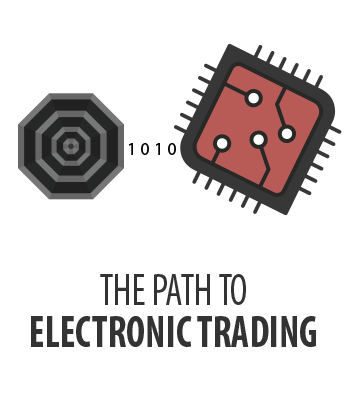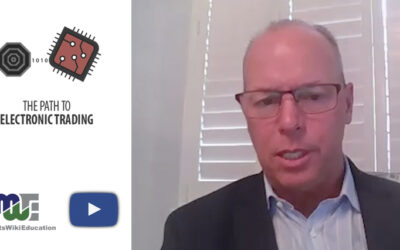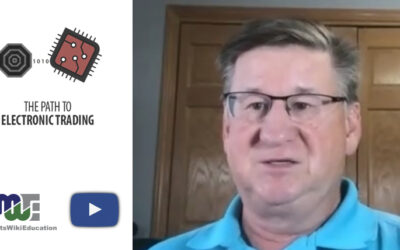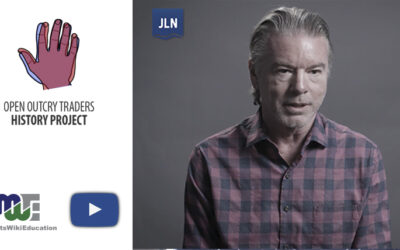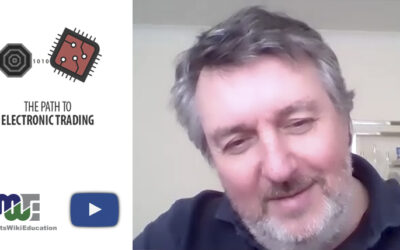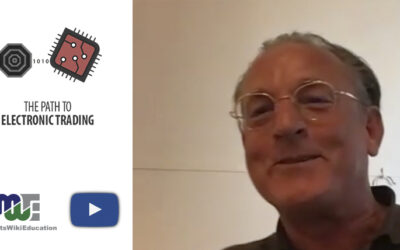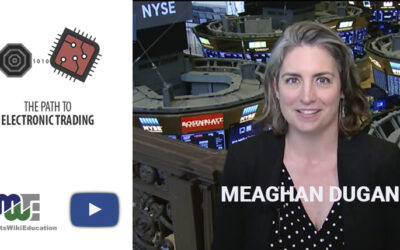Alex Lamb pursued one opportunity after another in the burgeoning financial futures markets in Europe starting in the mid-1970s, then later with technology providers to markets around the world that migrated to electronic formats. After he hired Gary Kemp as a programmer to connect GMI and DTB and then develop a front-end screen that turned into Trading Technologies’ desktop offering, Kemp returned the favor and hired Lamb at TT.
While Lamb was working at Trading Technologies, a venture capital firm made a significant offer for a small percentage of the firm. Kemp and Lamb had made a presentation to the venture capital firm, which was unaware the futures markets were being “electronified.” Ultimately, Kemp would turn down the offer.
However, Kemp mentioned the offer to Harris Brumfield, who was a customer of TT’s. Lamb said Brumfield, like the venture capital firm, saw the potential of electronic trading software as the markets moved electronically. So Brumfield bought a big chunk of TT equity, which gave the firm the money to expand its employee base and ramp up its presence around the world.
Part of that ramp up was hiring Mark Thornberry, a neighbor of Lamb’s, to run the expanded London office of TT.
However, Lamb said he became disenchanted with the direction of TT in 2001 and left the firm to join SmartStream Technologies. Lamb said he wanted to learn more about the equities investment and data manipulation there.
He said he did not like the management style at SmartStream and on September 11, 2001 he walked into the CEO’s office. The CEO asked if he wanted to leave or be fired. He was fired, which was a relief to Lamb.
Lamb then found two two new opportunities, one with ED&F Man and another with Goldenberg Hehmeyer. The offer from ED&F Man was to run electronic trading. He chose to go with Goldenberg Hehmeyer, where he had proposed they build the first multimarket bond and futures trading platform connecting eSpeed, BrokerTec, CBOT, CME, Liffe and Patsystems.
Lamb also suggested they take the data from the various markets and develop a risk management system. That browser-based system was fun to build, Lamb said.
In another job move, after multiple interviews in a pub, Lamb was asked by EasyScreen CEO Phil Docker to join the firm. However, as soon as he joined EasyScreen, Lamb was made chief operating officer after Docker fired the previous one. He found the environment toxic and thought the firm was going to run out of money.
EasyScreen found a solution in selling itself to Refco. However, Lamb decided that either he or Docker should run the operation at Refco. Refco chose to keep Docker, and Lamb quit and stayed home as a “Mr. Mom” for a year.
A year later, Steffen Gemuenden of RTS contacted Lamb about working for RTS, a company Lamb had approached twice before. Lamb joined RTS and helped them refocus their business on market access and algorithmic trading. RTS also developed a skinny front end and grew the business significantly.
For the last seven years Lamb has worked with IT Software, formerly Technancial, to sell a real-time risk management platform.
